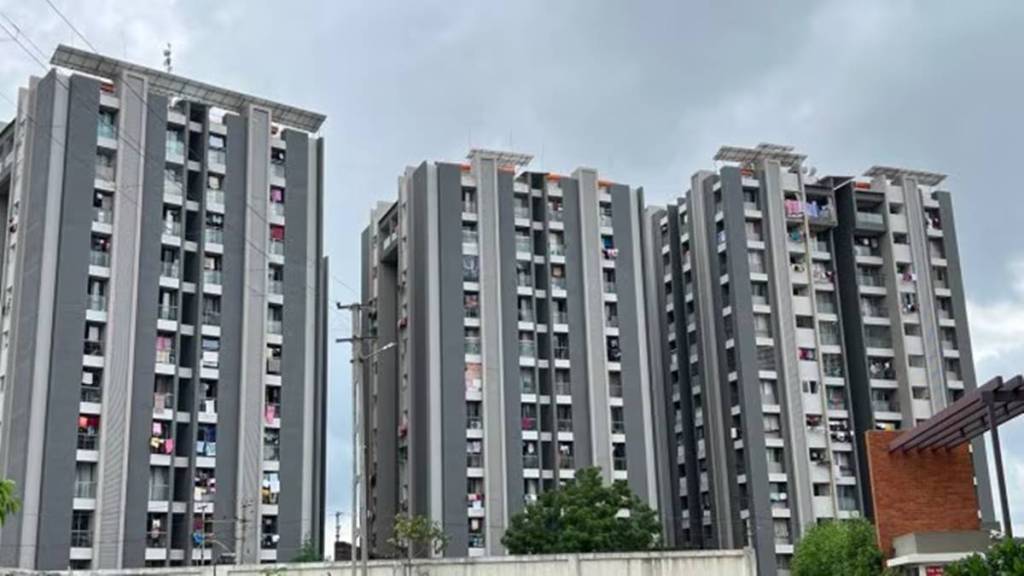Real estate prices and rising pollution levels seem to making strange bedfellows. The National Capital Region (NCR) has seen one of the steepest rise in real estate prices in the past few years along with a sharp decline in the air quality level.
According to Anarock Property Consultants, average residential prices have gone up 57% between 2019 and the end of Q3FY25. At the end of the September quarter, average prices in NCR touched `7,200 per square feet.
Residential prices in Gurugram jumped the most in the past five years from 7,500 per sq ft in 2019 to19,500 per sq ft in 2024, a rise of 160%, according to data analytics firm PropEquity. It’s a strange coincidence that Gurugram’s air quality level has also been declining at an alarming pace.
Gulam Zia, executive director at property consultant Knight Frank, puts the nail on the head by pointing out buyer apathy. Buyers, he says, simply don’t care about the quality of air or water. “People don’t mind buying apartments in front of a burial ground or crematorium. This is the reality of real estate,” he said.
Zerodha co-founder Nithin Kamath recently proposed linking property prices to air and water quality in cities. He also mooted a “discount on property prices” to solve the pollution problem. “Maybe a property price discount for the quality of air and water is the solution. If economics accounted for this, maybe we would all figure this out. Essentially the air and water quality determine the rate for the property,” Kamath posted on X on November 24.
Also, this would probably turn a property owner into the owner of the place, and would have better odds of fixing it if working as a group, he said.
While Delhi is getting all the attention, the air quality index (AQI) isn’t good in most urban areas in the country. Mumbai, Chennai, Kolkata, Bengaluru and others are included in areas with very poor air quality, he said.
Kamath also said cities such as Delhi, Mumbai, Kolkata and Chennai have seen pollution-related deaths of 11,964, 5,091, 4,678 and 2,870, respectively. “You have to wonder what it will take for us to take air pollution more seriously. By the way, this data only covers until 2019, and things have only gotten worse in the last five years,” he said.
Environmentalists such as Anumita Roychowdhury, executive director, research and advocacy, Centre for Science and Environment, said the real estate industry should start integrating these micro environmental concerns into the value of the projects “so that people pay prices for quality of life.”
Roychowdhury said that there are instances where green elements of the real estimates are put in front to promote a project like lake view property, green belt and rain water harvesting facilities.
“For instance, there are reports about several families shifting out of Delhi-NCR during the winter months to escape poor air quality,” she said, adding that there is a need to study the correlation between property prices and quality of air or water a place offers.
Vikrant Tongad, a Noida-based environmentalist and founder of Social Action for Forest and Environment, said, “Decision to buy a property is currently guided by employment opportunities available in the urban centres, concern about the environment often is seen as a temporary annual phenomenon during winter months.”
But real estate developers such as Sanjay Dutt, managing director & CEO at Tata Realty & Infrastructure, said governments should have invested in controlling pollution at all levels.
“Government collect education cess , water cess and so on. That never gets spend. Then these kind of problems bound to happen,” Dutt said.
Dutt added that it is good that cites such as Mumbai have got Coastal Road, new metro lines and so on and it is a welcome move. “But all these should have happened 20 years ago. They are delayed,” he said , adding that electric vehicles have reduced pollution and pre-cast technologies have reduced construction pollution.
He said because infrastructure is bad in many cities, people are paying premium to stay in good localities. “Real estate prices are high because infrastructure is bad,” he said.


